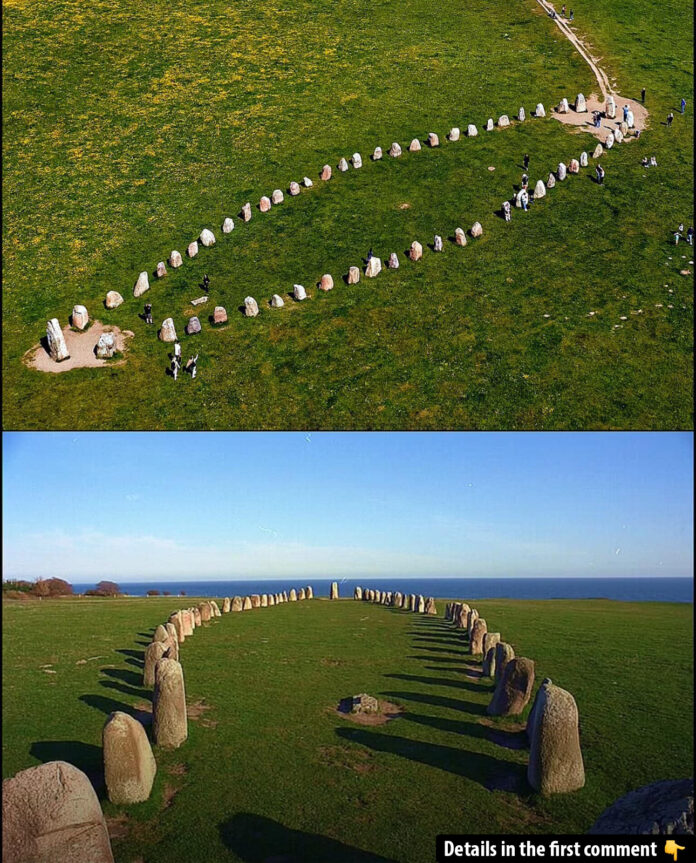Sweden is renowned for its stunning landscapes, vibrant culture, and Viking heritage. Yet, hidden among the rolling hills of Scania, a mysterious ancient site captivates historians and travelers alike. Ale’s Stones, a monumental megalithic structure shaped like a ship, has puzzled researchers for centuries. This prehistoric landmark, often referred to as Sweden’s “Stonehenge,” offers a glimpse into the lives and beliefs of early Scandinavian societies. Despite its age, the site’s origins, purpose, and significance remain subjects of spirited debate, intertwining legend, history, and archaeology.
The Legends and History of Ale’s Stones
Ale’s Stones, located near the fishing village of Kåseberga, is steeped in folklore. According to local legends, a mythical king was buried here, his spirit eternally watching over the Baltic Sea. The term “Ale” is thought to mean “sanctuary” in ancient Nordic languages, leading some to believe that the site served as a sacred burial ground for warriors lost in raids or sea voyages.
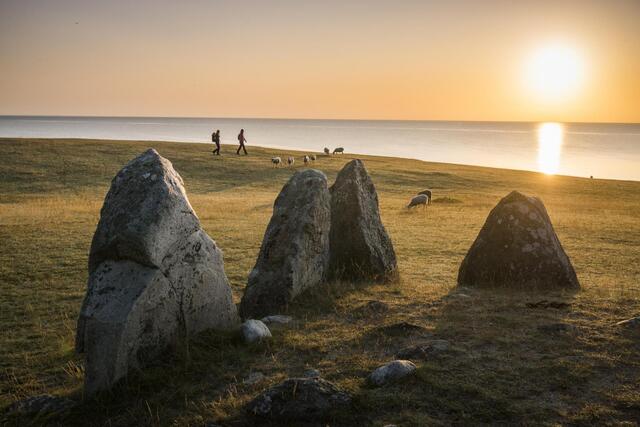
Archaeological studies have deepened the mystery. Carbon dating suggests the site’s origins may stretch back 5,500 years to the Neolithic period. However, other evidence points to the Nordic Iron Age, around 500–1000 AD, when it might have been repurposed from an earlier Bronze Age structure. This layered history fuels speculation that Ale’s Stones evolved over millennia, reflecting the cultural shifts of the communities that used it.
The Ship Shape and Its Symbolism
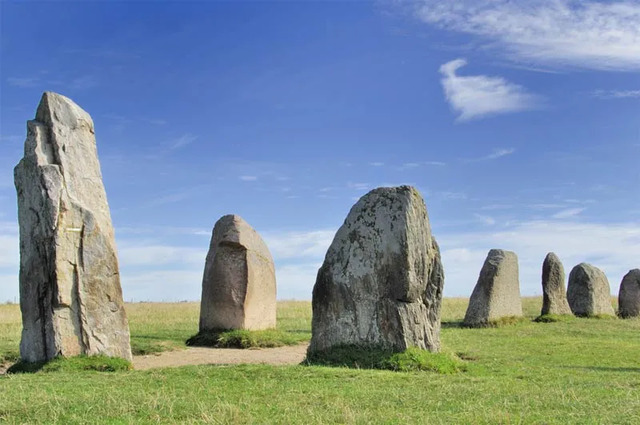
The layout of Ale’s Stones is as striking as its location. Fifty-nine boulders, some weighing up to 1.8 tons, are arranged in an elliptical shape resembling a ship. Measuring 67 meters in length and 19 meters at its widest point, the structure dominates the hilltop landscape.
In ancient Scandinavian culture, ships symbolized life’s journey and the passage to the afterlife. The ship-like design of Ale’s Stones may reflect these beliefs, serving as a spiritual vessel for the souls of the departed. It’s also possible that the monument commemorated seafarers, given the region’s strong maritime traditions. This connection to the sea adds a layer of cultural resonance, reinforcing the site’s significance to its builders.
Video
Discover Sweden’s most mysterious rocks – watch the video to explore the fascinating history, myths, and secrets behind these ancient stone formations!
Astronomical Alignments and Celestial Observations
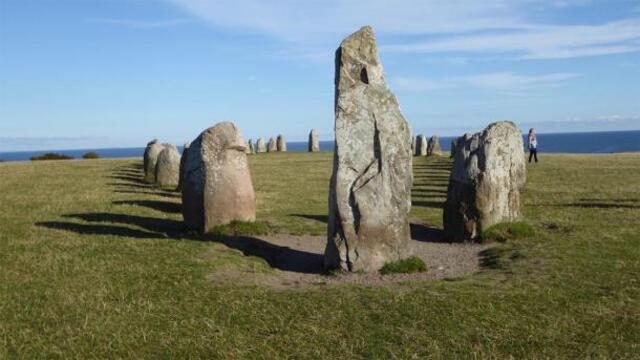
One of the most intriguing aspects of Ale’s Stones is its celestial alignment. Researchers have observed that the stones align with the sun’s movements during the solstices. At the summer solstice, the sun sets at the northwestern corner of the formation, while at the winter solstice, it rises at the opposite end.
These alignments suggest the site may have served as an astronomical calendar, allowing its builders to track important seasonal changes. In agricultural societies, such knowledge would have been crucial for planning planting and harvesting. Bonfires and hearths discovered at the site further hint at solstice celebrations and ritual gatherings. These observations underscore the potential religious and communal significance of Ale’s Stones, connecting its builders to the rhythms of nature.
Comparisons with Stonehenge and Global Connections
Ale’s Stones has often been compared to England’s Stonehenge, both for its geometric precision and its mysterious purpose. Nils-Axel Mörner, a retired Swedish geologist, has proposed that the site was constructed during the Bronze Age, much earlier than previously believed. According to Mörner, the similarities in design and alignment between Ale’s Stones and Stonehenge indicate shared knowledge or cultural exchange between Scandinavia and other parts of Europe.
This theory highlights the interconnectedness of ancient societies. Bronze Age Scandinavians were not isolated; they participated in trade and cultural exchanges with communities across Europe and the Mediterranean. The ship-shaped monument may symbolize this interconnected world, blending local traditions with influences from afar. While Mörner’s ideas remain contentious, they open the door to exploring broader narratives of prehistoric globalization.
The Construction Mystery
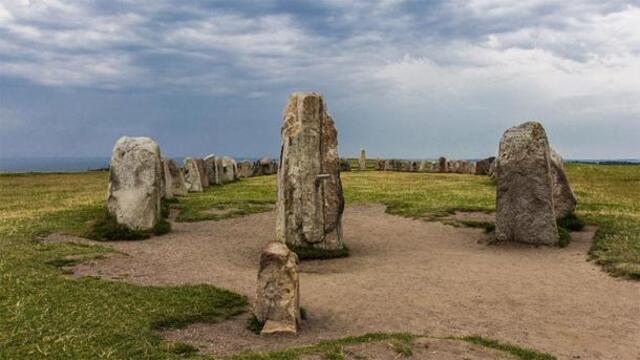
How Ale’s Stones was built remains a marvel of ancient engineering. The massive stones were likely quarried up to 30 kilometers away and transported using sleds, ropes, and wooden tools. The precision required to arrange the stones in their ship-like formation suggests a well-organized labor force and significant resources.
The stones also bear faint cup marks, a type of engraving common in Bronze Age art. These marks, though weathered, hint at the symbolic or ritualistic importance of the monument. Recent discoveries of additional stones nearby have led archaeologists to speculate that Ale’s Stones was part of a larger ceremonial landscape, adding to its complexity and intrigue.
Modern Interpretations and Ongoing Debates
Despite decades of research, Ale’s Stones continues to inspire debate. While some scholars view it as a burial monument, others argue it was primarily an astronomical calendar. Academic archaeologists, like Martin Rundkvist, emphasize its likely role as a grave marker for Iron Age seafarers, aligning with similar stone ship formations found across Scandinavia.
In contrast, New Age enthusiasts often attribute mystical properties to the site, seeing it as a portal to ancient wisdom. While such interpretations lack scientific evidence, they highlight the enduring fascination with Ale’s Stones. The site’s allure lies not only in its historical significance but also in its capacity to spark imagination and wonder.
Visiting Ale’s Stones Today

Situated on a hill overlooking the Baltic Sea, Ale’s Stones offers a breathtaking experience for visitors. The panoramic views of Österlen’s hilly landscape and the coastal horizon enhance the site’s mystical atmosphere. Accessible from the nearby town of Ystad, it’s a popular destination for history enthusiasts, solstice celebrants, and curious travelers.
Visitors can walk among the stones, marveling at their scale and alignment. While there are no facilities on-site, the surrounding area provides opportunities for picnics, hiking, and exploring local folklore. The site’s simplicity adds to its charm, inviting visitors to reflect on its ancient origins and the mysteries it holds.
Conclusion: Unlocking the Secrets of the Past
Ale’s Stones stands as a testament to the ingenuity and cultural depth of ancient Scandinavian societies. Its ship-like shape, celestial alignments, and layered history offer a window into the beliefs and practices of its builders. Whether a burial site, an astronomical calendar, or a symbol of maritime identity, the monument’s enduring mystery continues to captivate scholars and visitors alike.
As we explore sites like Ale’s Stones, we uncover not only the secrets of the past but also the shared human drive to leave a mark on the world. These ancient landmarks remind us of our connections to history, nature, and each other, bridging the gaps between myth, memory, and modern understanding.
